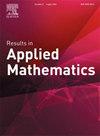第二Pappus-Guldin定理的推广
IF 1.4
Q2 MATHEMATICS, APPLIED
引用次数: 0
摘要
本文研究了当物体在R3空间中被切成垂直于给定曲线的薄片时,如何计算其体积的问题。答案是由一个公式提供的,这个公式可以被认为是第二个帕普斯-戈尔丁定理的推广版本。结果表明,如果曲线直接穿过垂直截面的质心,计算就变得非常简单。在这种情况下,出现了具有这种质心性质的曲线是否存在的问题。我们利用凸体K的体积距离和所谓K的浮体的某些特征来研究这个问题。作为一个例子,我们进一步确定了三轴椭球体的非平凡质心曲线,最后我们应用我们的结果推导了一个相当简单的公式来确定弯曲杆的质心。本文章由计算机程序翻译,如有差异,请以英文原文为准。
A generalization of the second Pappus–Guldin theorem
This paper deals with the question of how to calculate the volume of a body in when it is cut into slices perpendicular to a given curve. The answer is provided by a formula that can be considered as a generalized version of the second Pappus–Guldin theorem. It turns out that the computation becomes very simple if the curve passes directly through the centroids of the perpendicular cross-sections. In this context, the question arises whether a curve with this centroid property exists. We investigate this problem for a convex body by using the volume distance and certain features of the so-called floating bodies of . As an example, we further determine the non-trivial centroid curves of a triaxial ellipsoid, and finally we apply our results to derive a rather simple formula for determining the centroid of a bent rod.
求助全文
通过发布文献求助,成功后即可免费获取论文全文。
去求助
来源期刊

Results in Applied Mathematics
Mathematics-Applied Mathematics
CiteScore
3.20
自引率
10.00%
发文量
50
审稿时长
23 days
 求助内容:
求助内容: 应助结果提醒方式:
应助结果提醒方式:


